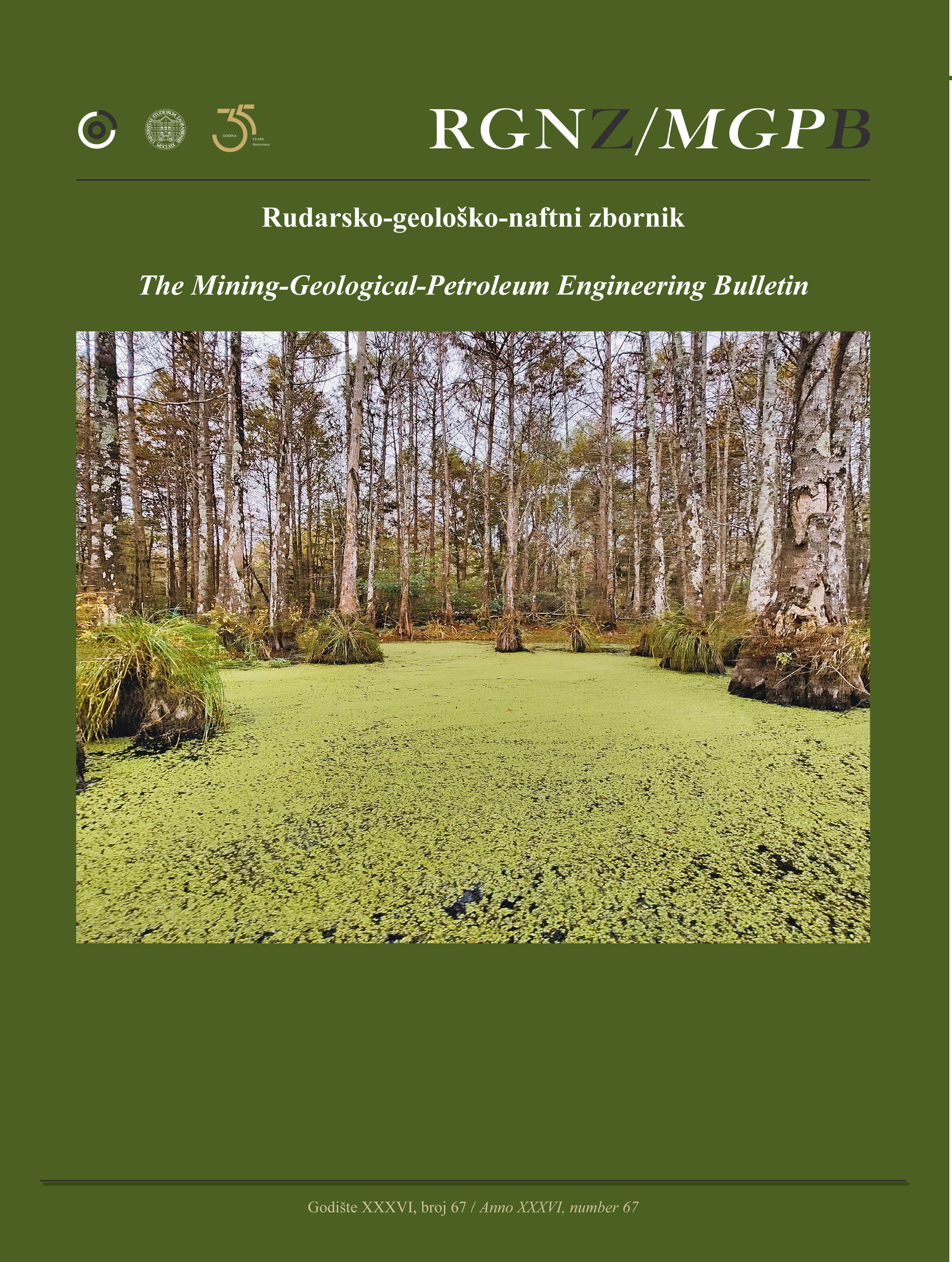The influence of head strap elasticity on the protective properties of filtering facepiece respirators
DOI:
https://doi.org/10.17794/rgn.2024.1.11Keywords:
occupational disease, respiratory protection of workers, filtering mask respirator, elastic strap, improved designAbstract
The level of occupational respiratory diseases among workers in the mining, machine-building and metallurgical industries remains high. The most common occupational respiratory disease is pneumoconiosis, which is the result of the long-term inhalation of dust. It is possible to minimize the impact of dust on the workers and eliminate such diseases in the future due to the use of filtering mask respirators designed to reduce dust infiltration into the space under the mask. For this purpose, the choice of the type of elastic bands of filtering mask respirators has been substantiated by the geometric shape and tension forces that can ensure a permissible level of leakage of contaminated air into the breathing zone of the respirator during its use. A mathematical model has been developed to describe the influence of parameters of elastomeric headgear on the protective properties of the respirator. The dependence of the change in the residual tensile strength of the elastic bands of the headband has been established, and the dependence of the volume of air suction on the area of the elastic straps at the corresponding tension force has been determined. Using the model, the dependence of the volume of polluted air inflow on the area of the elastic straps at the corresponding tension force has been estimated. The design of the innovative inserts has been offered, which makes it possible to control the tension of the elastomeric head straps of the respirator to visualize the weakening of the pressure forces responsible for maintaining a tight fit.
Downloads
Published
How to Cite
Issue
Section
License
Copyright (c) 2024 Serhii Nehrii, Larisa Tretiakova, Yurii Cheberyachko, Olena Sharovatova, Tetiana Nehrii, Bohdan Kravchenko, Oksana Zolotarova

This work is licensed under a Creative Commons Attribution 4.0 International License.
Creative Commons-BY
Authors who publish with this journal agree to the following terms:
In agreeing this form, you certify that:
- You read the ethical codex of the RGN zbornik available at journal web.
- You submitted work is your original work, and has not previously been published and does not include any form of plagiarism.
- You own copyright in the submitted work, and are therefore permitted to assign the licence to publish to RGN zbornik.
- Your submitted work contains no violation of any existing copyright or other third party right or any material of an obscene, libellous or otherwise unlawful nature.
- You have obtained permission for and acknowledged the source of any illustrations, diagrams or other material included in the work of which you are not the copyright owner.
- You have taken due care to ensure the accuracy of the work, and that, to the best of your knowledge, there are no false statements made within it.
- All co-authors of this submitted work are aware of, and in agreement with, the terms of this licence and that the submitted manuscript has been approved by these authors.
Publication licence
You retain copyright in your submitted work, according to journal license policy (CC-BY). By signing this form you agree that RGN zbornik may publish it under the publication licence. In summary the licence allows the following:
Anyone is free:
- To copy, distribute, display, and perform the work.
- To make derivative works.
Under the following conditions:
- The original author must always be given credit.
- The work may not be used for commercial purposes.
- If the work is altered, transformed, or built upon, the resulting work may only be distributed under a licence identical to this one.
Exceptions to the licence
In addition to publishing the work printed under the above licence, RGN zbornik will also enable the work to be visible online.
The journal editorial can change the licence rules anytime but it cannot retroactively restrict author(s) rights.


